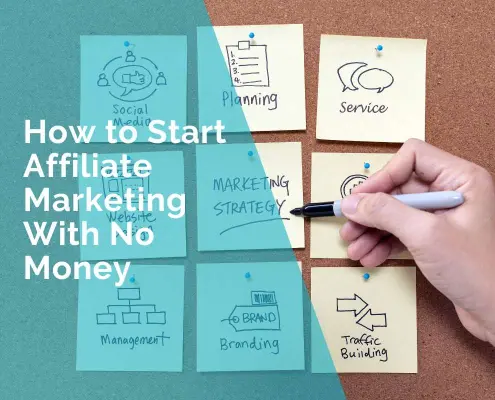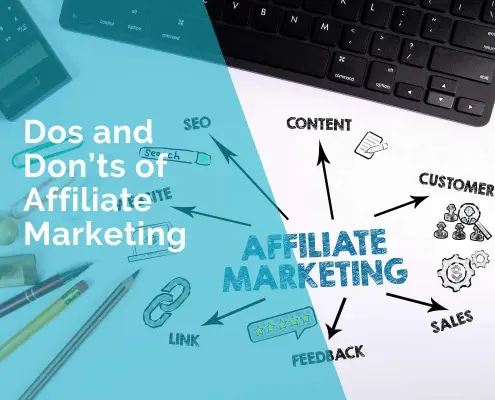How to Start a Business in Disability Care
Starting a business in disability care can be simultaneously a rewarding and challenging endeavour.
Despite its high financial starting costs, this business model grants you access to various financing opportunities, with one notable one being the National Disability Insurance Scheme in Australia.
With this added financial assistance, prospective entrepreneurs have substantially more opportunities to help support people with disabilities through their businesses.
However, funding and dedication to supporting PWDs aside, starting a business requires skill, grit, and determination to succeed.
It also requires you to abide by legal regulations and laws to ensure that you’re doing business within solid legal bounds. This fact is especially crucial in disability care, as people’s lives are at stake.
If you sharpen and prepare yourself to undertake this challenge, then read on. This article will outline some steps to help you get your disability care business plan into motion.
Let’s start!
1. Research and Analyse The Market
Before you dive headfirst into a new disability care business venture, it’s crucial to know the market landscape surrounding it.
First, gather data on your business’s viability and your target market’s general profile.
As a start, you can gather local statistics from government agencies or private companies. From there, you can analyse whether your product can sustain enough demand and generate sales.
You may also hold your own private research sessions, particularly if your business offering resonates only with a niche market.
This research can be done by hosting roundtable discussions, conducting surveys, or doing interviews with people who may have some interest in your offering.
You may also network with fellow entrepreneurs who work in the disability space and get their insights on current market conditions.
By talking with these other business owners, you can get an idea of your competitors and how competitive the market is for your industry.
After gathering all these data points, you can develop a quantifiable estimate of potential customer demand and product or service viability. You may even see other gaps in the current market, which you can potentially fill if you have the resources.
In summary, these data points can help you estimate the projected sales outcomes of your business, which should be the primary determining factor in whether you push through with the business plan or pivot in another direction.
2. Construct a Business Plan
Once you’ve honed in on a business idea, it’s time to develop it further through a business plan.
A well-constructed business plan is vital for entrepreneurs since it helps them comprehensively define their business, particularly its vision statement, mission statement, core values, business model, and target market.
Furthermore, a business plan also plainly lays out the strategies your business will leverage to grow and develop itself. The perfect time to conceptualise your marketing strategy, operational and supply chain processes, and funding strategy is during the business planning phase.
Beyond that, business owners also generally make financial projections for their business during this stage. This is the perfect time to create milestones and goals and truly determine whether your business can grow in the current landscape.
With a business plan, you can steer your business in a clear direction and even tap into potential funding opportunities from loan providers. These factors can help you make and execute better business decisions that align with your long-term goals.
3. Comply with Legal Requirements
Understanding the regulatory environment surrounding disability care is essential for every business owner in this field. This helps protect you and the consumer against fraud and other illegal activities.
In Australia, for instance, you have to get an Australian Business Number (ABN) to operate and deliver products or services to the broader public. You also need to register for a tax file number, regulatory permits, and a registered business name, among other things.
Your product and service must also be safe for consumer use. If you’re selling a product, ensure that it’s undergone rigorous testing and has the relevant certification to be deemed safe for use.
Besides that, you also have to hold up your side of the contract in obligations with government parties like the NDIS.
This entails not overcharging customers beyond the set price limit, declaring prices before delivering services, and providing participants with a receipt and invoice only after service has been provided.
To ensure that you’re compliant with all the regulatory proceedings expected of a disability care business, contact an NDIS and business lawyer to ensure that you’re treading on the right side of the law.
You can also familiarise yourself with the legal requirements listed on the NDIS website.
4. Exhaust Financing Options
Unless you have a huge starting capital, then you likely need to get financial assistance to amass enough equity to start doing business.
Fortunately, there are many ways you can get this funding. You can start by looking through this database of government grants and see if your business is eligible for any of the grants in the list.
Besides that, you can also apply for a bank loan or a personal loan from financial institutions. You’ll be given a lump-sum payment that can be used immediately to acquire equipment, hire staff, or streamline operations.
Australian disability care businesses can avail subsidies through the National Disability Insurance Scheme (NDIS) as well and using the right NDIS software can streamline funding management and compliance.
You’ll be given the option to choose a funding plan—either self-managed or agency-managed—then from there, your business can claim up to the maximum price in the Pricing Arrangements and Price Limits for each bracket.
By taking advantage of one or more of these financing options, you can improve cash flow and jumpstart operations more quickly. That said, never bite off more than you can chew and manage your leverage wisely.
5. Invest in Equipment, Software, and Staff
Now that you have the funding, it’s time for the next step: acquisition.
Select and purchase equipment, merchandise, raw materials, and software that your business would need to begin operating.
This can come in the form of high-quality medical and assistive equipment, transportation, and other healthcare-related assets—it inherently depends on your business idea.
If your business relies on technology, then invest in relevant software as well. Many of the best NDIS software can help you operate 40% more efficiently, reducing staffing costs and inaccuracies in reports, all while improving overall staff productivity.
Also, use this time to select and vet the best team for your business. Ensure that your team is not only a personality fit but also has the knowledge to perform their function competently.
6. Market Your Business to the Public
Once you’ve gathered everything you need to start operating, then it’s time to launch your business to the public.
Ideally, you have already set up a social media page, a company website, an email address, and a telephone line for customers to contact you. But if you haven’t done so yet, do it! Ensure that your website and pages are all nicely designed, cleanly presented, and easily accessible so customers can contact you with ease.
At the initial stages of your business journey, you’re still fresh and untested by the market. Start by establishing brand awareness and advertising your business in places where your core demographic may frequent.
Also, build relationships with your customers. Engage your audience through blog posts, newsletters, and social media content. If they’re mostly offline, then go door-to-door to catch their attention or establish partnerships with relevant local organisations.
By being proactive and pushing a robust marketing campaign, you can steadily grow your business and reach your customers. And if your product or service is what they’re looking for, then you’ll have no problem getting repeat business and new customers.
7. Reiterate and Adapt to Market Changes
The business world is a dynamic space, and the disability care sector is no exception. As an entrepreneur, you need to be well aware of the current events surrounding this industry.
The reason is simple: by being aware of market changes, you can make quick pivots and maximise your business’s earning potential. You can also score in on opportunities more quickly than your competitors.
Besides that, you can also incorporate new technologies and deliver a new and improved standard of care to your patients. By embracing an adaptive mindset, you can let your disability care business stay relevant in the eyes of your primary customers.
***
Author: Rebecca Lee












